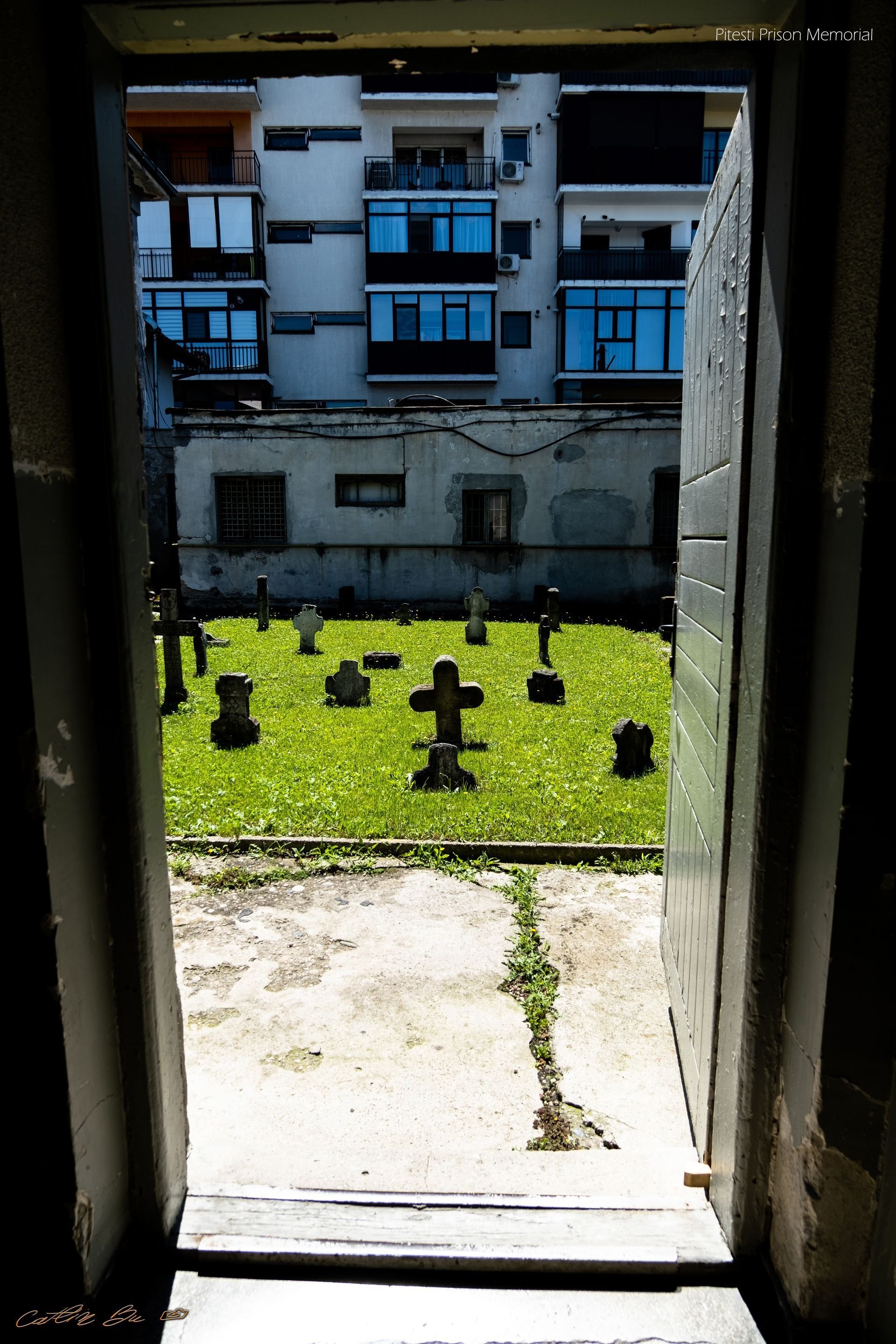Collective Trauma

About collective trauma - and how it affects the human psyche, both at the individual level and at the societal level
Collective trauma refers to a traumatic event that is shared by a group of people. It can be the case of a small group, like a family, or the case of an entire society.
In the case of collective trauma, it is not necessary for a person to have experienced the trauma itself to be sensitized by it. Simple exposure to news about a disaster can be traumatic. Traumatic events that affect groups can include: plane crashes, natural disasters (earthquakes, fires, etc.), mass shootings, famine, war, or pandemics. The most well-known traumatic events are slavery in America, the Holocaust, the atomic bombings of Hiroshima and Nagasaki, the September 11 terrorist attack, and the Paris terrorist attacks. In Romania, the most well-known traumatic events are the communist regime, the miners' riots of the '90s, the Colectiv fire, and the August 10 attacks. Currently, the world's population is experiencing an ongoing traumatic event through the COVID-19 pandemic.
Also, traumatic experiences can cause major changes in how people in a culture behave, how they feel, how they work together, and how they raise their children.
The Impact of Trauma on Mental Health
A traumatic situation can alter a person's ability to manage stress. People may feel they have lost their sense of purpose and may have difficulty finding pleasure. Sometimes, the effects of trauma can diminish over time, while other times the effects of trauma can remain significant in the long term. Among the effects of trauma we find: stress, anxiety, insomnia, which in the long term can lead to post-traumatic stress disorders and deterioration of quality of life.
Conditions Resulting from Trauma
Trauma is associated with many conditions. Some people may develop symptoms of post-traumatic stress (PTSD), anxiety, or even somatic illnesses.
PTSD - people suffering from post-traumatic stress may experience vivid memories in the form of flashbacks, intrusive thoughts and images, nightmares, intense suffering at real or symbolic memories of the trauma, physical sensations such as pain, sweating, trembling, or nausea.
Anxiety - people suffering from anxiety experience feelings of fear or intense worry in the absence of imminent danger. Anxiety is characterized by the development of chronic (long-term), repetitive worrying thoughts that represent a stress element and can interfere with daily activities. Often, people suffering from anxiety develop various phobias.
Somatic symptoms - it is observed that often, people suffering from anxiety can develop somatic symptoms such as: chronic muscle or joint pain; neurological symptoms such as chronic headaches, movement disorders, weakness, dizziness, or fainting; digestive symptoms such as chronic abdominal or stomach pain, diarrhea, incontinence, or constipation; sexual symptoms such as intense pain during intercourse or painful menstruation. These symptoms, if not treated in time, can degenerate into somatic diseases.
What Effects Do Collective Traumas Have on Individuals?
The effects of traumatic events can be both positive and negative.
Positive Responses to Trauma:
Traumatic events can be opportunities for growth, which researchers call post-traumatic growth. Increased self-esteem - some people may report better self-esteem and better relationships with others following a traumatic event, although they state they would have preferred the traumatic event not to have occurred. Groups or societies can be affected in such a way that the traumatic situation helps them make positive changes. Groups can unite for a common purpose, report less suffering when together, individuals can develop positive strategies to resist trauma and find new ways to manage suffering. We can remember the general lockdown period during the COVID-19 pandemic, when people from all over the world hummed melodies or sang on balconies at a certain hour, when police cars patrolling broadcast the national anthem at a certain hour, etc.
Even some studies have found that shared pain can help some groups unite. This has been found both in laboratory experiments and in studies conducted on communities that have suffered a traumatic event.
In a laboratory study, one group of participants was asked to complete tasks that included pain, such as plunging their hands into ice-cold water or performing wall squats. The other group received tasks that did not include pain, such as plunging their hands into room-temperature water and balancing on one foot for 60 seconds. Participants in the pain group reported feeling more connected to each other compared to the group that did not suffer pain. Subsequent studies indicated that pain experiences also increased cooperation among group members.
The same phenomenon was demonstrated in 2010, when Chile suffered an earthquake that affected over 22,000 homes. Researchers found that people who worked together to obtain water, food, firewood, shelter, and emotional support showed reduced trauma impact.
Working together to help each other increased altruism, social support, cohesion, and positive social beliefs and values.
Negative Responses to Collective Trauma:
In the case of collective traumas affecting entire communities, individuals in some societies develop the same types of symptoms, making healing more difficult. In such cases, it is hard to find treatment providers who have not also been traumatized. When you are surrounded by family and friends struggling with symptoms, it is very possible to take on their symptoms. This experience is common and we refer to it as vicarious trauma. Pain can be widespread and unhelpful responses can become normalized. For example: an entire society may start hoarding food after a famine, even when food is abundant again. Anxiety can be contagious, as everyone begins to live in a state of chronic stress. Individuals may suffer and entire communities may struggle to move forward.
Collective Trauma Following the COVID-19 Pandemic
The current pandemic has made many people feel on edge and uncertain about life. Whether they are worried about getting sick, not being able to visit loved ones, their children not going to school, or their financial future, the pandemic has created a collective experience that affects most people's mental health in a similar way. Together, communities have had to figure out how to cope with uncertainty - because there was no clear data on when society would reopen or when a vaccine might become available.
Generational Trauma:
People who have suffered traumatic experiences can transmit their trauma responses to the next generation. This can be seen in families: a parent who suffered significant abuse in childhood may, for example, raise fearful and anxious children.
However, generational trauma can also be seen in societies as a whole. People who survive genocide, for example, may continue to raise children who show symptoms of traumatization, even if they were not actually present at the traumatic event.
One study found that generational trauma occurs in Ukraine. People who survived the Holodomor (the mass starvation of millions of Soviet Ukrainians from 1932 to 1933) seemed to transmit their trauma to their children and grandchildren.
A 2020 study found that aspects such as risky health behaviors, anxiety and shame, food hoarding, overeating, authoritarian parenting styles, high emotional need, and low community trust were transmitted from one generation to another. Younger generations seemed to be in "survival mode," even though they were safe.
Communities that survive traumatic experiences, from mass shootings to natural disasters, can transmit their traumatic responses to younger generations. The stories they tell and the behaviors they exhibit can cause younger generations to behave as if they too had experienced the trauma.
Some research indicates that trauma responses that can be transmitted from one generation to another are not just psychological or behavioral. There may also be biological consequences from trauma: a study that examined the lifespan of Civil War prisoners (POWs) found that soldiers who were held in harsher conditions had sons who died at younger ages. Researchers found that the sons of former prisoners when camp conditions were at their most severe were 1.1 times more likely to die by age 45 than the sons of non-POWs; and 1.09 times more likely to die than the sons of former prisoners when camp conditions were better.
The paternal status of former POWs had no impact on the lifespan of daughters. The study authors suspect that the father's biology was affected and the trauma had a genetic effect only on their sons.
In addition to these studies, generational trauma often occurs commonly in our society due to poverty, incarceration, community violence, and abuse occurring in families.
Societal Changes Following Collective Traumas:
Sometimes, the impact of collective trauma has long-lasting effects on how a society operates. For example, following the September 11 attacks, a major change that occurred was how the TSA screens passengers. Rules about what you can carry on board a flight changed. And screening procedures also changed. These protective measures remain in place today as a result of this event. It was a societal change that resulted from collective trauma.
Watching News About a Traumatic Event
Media portrayal contributes greatly to the traumas happening in society. It is important to be aware of the news you consume during a traumatic event. Repeatedly watching horrific images of death, destruction, and despair can traumatize you, even if you are not in physical danger. The internet has made it easy to consume media constantly. And it can be tempting to constantly scroll through news to feel like you're up to date with the latest events. But it is possible to stay informed without constantly immersing yourself in content.
After a traumatic event, it is important to consider how you respond, as well as how your community responds to the event. When you view a traumatic event as a way to unite for the common good, you might discover that you are able to heal faster from the experience. And, you might discover that you are able to move forward stronger and better than before.
Addressing Collective Trauma
Addressing collective trauma will not only support individuals but will also fuel a healthier society. Those suffering from trauma should seek appropriate care and healing as soon as possible and need resources to do so. Governments, agencies, organizations, and mental health providers must help individuals and communities affected by any form of trauma. After a major traumatic event, officials must talk about its effects on mental health, share phone numbers and websites for crisis interventions, and provide psychological first aid in the form of on-site counseling. While treating trauma at the national level may be more difficult, failure to do so will only lead to some communities not having access to the care and resources they deserve. If individuals are not helped and social causes are not addressed, collective traumas can exacerbate existing inequalities in society.
One Last Thought
Seek to inform yourself.
Stay open.
Learn the lessons of the past, otherwise it will repeat itself.

